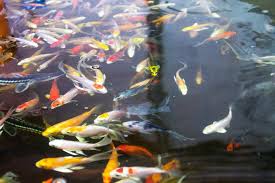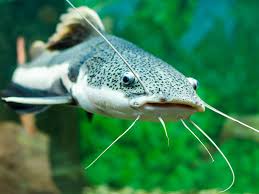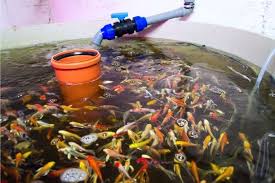Aquaponics is an innovative and sustainable farming method that combines aquaculture (raising fish) and hydroponics (growing plants in water without soil). This method creates a symbiotic environment where fish waste provides essential nutrients for plants, while the plants help filter and clean the water for the fish.
One of the crucial aspects of a successful aquaponic system is selecting the right fish species. The best fish for aquaponics not only thrive in a controlled environment but also contribute to the overall health and productivity of the system.
Choosing the right fish can significantly impact the efficiency of nutrient cycling, the growth rates of plants, and the overall yield of the system. Different fish species have varying environmental needs, growth rates, and waste production levels. Therefore, understanding these factors is essential for both novice and experienced aquaponic farmers. Some fish are more suited for beginners, while others might require more expertise to manage effectively.
In addition to the practical considerations of growth and waste management, the choice of fish also affects the ecosystem of the aquaponic system. The fish selected should be able to coexist with each other and with the plants, promoting a balanced ecosystem. Factors such as water temperature, pH levels, and oxygen content should also be considered when choosing fish, as these parameters can influence the health and growth of the fish and plants.
Some popular fish species for aquaponics include tilapia, catfish, trout, and goldfish. Each of these species offers unique benefits and challenges. For example, tilapia is known for its rapid growth and adaptability to various environmental conditions, making it an excellent choice for beginners. On the other hand, trout requires cooler water temperatures and higher oxygen levels, which can complicate their management in certain climates.
When selecting the best fish for aquaponics, it’s essential to consider your local climate, the scale of your system, and your goals as a grower. Some fish may be more profitable due to their market demand, while others may be easier to raise based on your experience level. Additionally, understanding the regulatory environment in your area is crucial, as some fish species may be prohibited or require permits for farming.
Ultimately, the best fish for aquaponics is one that aligns with your system’s specific needs and your personal preferences as a grower. By carefully selecting the right species, you can enhance the productivity of your aquaponic system, ensuring that both the fish and plants thrive.
The goal is to create a self-sustaining environment that not only provides a bountiful harvest but also minimizes waste and environmental impact. With the right knowledge and resources, aquaponics can be a rewarding and sustainable way to produce food.
Understanding Aquaponics Systems

1. Definition: Aquaponics is a sustainable farming method that combines aquaculture (raising fish) with hydroponics (growing plants in water). It creates a symbiotic environment where fish waste provides organic nutrients for plants, and plants help filter and purify the water for fish.
2. System Components: A typical aquaponics system consists of a fish tank, grow beds, pumps, and plumbing. Fish are raised in the tank, while plants grow in the grow beds above the tank, receiving nutrient-rich water from the fish.
3. Nitrogen Cycle: The system relies on the nitrogen cycle. Fish produce waste that contains ammonia, which is toxic to them. Beneficial bacteria convert ammonia into nitrites and then into nitrates, which are absorbed by plants as nutrients. The cleaned water is then recirculated back to the fish tank.
4. Types of Aquaponics Systems: There are various designs, including media-based systems, nutrient film technique (NFT), and deep water culture (DWC). Each system has different requirements for water flow, plant support, and fish species compatibility.
5. Environmental Benefits: Aquaponics is environmentally friendly, using significantly less water than traditional farming and eliminating the need for synthetic fertilizers and pesticides.
Benefits of Choosing the Right Fish
1. Compatibility with Plants: Selecting fish that thrive in your aquaponics system is crucial. Different fish species have different pH and temperature preferences, which can affect plant growth. Compatible species ensure a harmonious ecosystem.
2. Growth Rate and Yield: Some fish grow faster and have higher yields than others, impacting overall productivity. Choosing species with good growth rates can maximize the efficiency of your aquaponics system.
3. Nutrient Production: Fish produce varying amounts of waste, which provides nutrients for plants. Selecting fish that generate sufficient waste helps maintain nutrient levels for optimal plant growth.
4. Hardiness and Adaptability: Fish species that are hardy and adaptable to varying conditions can help reduce the risk of loss due to environmental stressors. This can lead to a more stable and resilient aquaponics system.
5. Economic Viability: The choice of fish can affect the economic success of your aquaponics operation. Popular and marketable fish can enhance profitability, making it essential to consider market demand when selecting species.
Read Also: 12 Medicinal Health Benefits of Nerium (Nerium Oleander)
Top Freshwater Fish for Aquaponics

1. Tilapia: Tilapia is one of the most popular fish for aquaponics due to its hardiness, fast growth rate, and ability to thrive in various water conditions. They can tolerate lower oxygen levels and are efficient at converting feed into body mass.
2. Catfish: Catfish are another excellent choice for aquaponics. They grow quickly, are bottom feeders, and can handle varying water conditions. Their resilience and adaptability make them suitable for beginners.
3. Trout: Trout require cooler water temperatures and are known for their fast growth and high market value. While they can be more challenging to manage due to their specific temperature and oxygen requirements, they can thrive in well-maintained aquaponics systems.
4. Goldfish: Goldfish are often used in educational setups and small systems. They are hardy and easy to care for, making them suitable for beginners. However, their waste production is lower than that of other species, which may limit nutrient availability for plants.
5. Bass: Bass are popular for aquaponics due to their high market value and fast growth. They require slightly warmer water temperatures and are best suited for larger systems with sufficient space.
6. Perch: Perch are suitable for aquaponics due to their fast growth and adaptability to various water conditions. They are also a popular food fish, adding to their market appeal.
7. Crappie: Crappie can thrive in aquaponics systems and are valued for their taste and marketability. They require slightly different water conditions than some other species, making them more suitable for experienced growers.
Ideal Saltwater Fish for Aquaponics
1. Barramundi: Barramundi is a popular choice for saltwater aquaponics due to its fast growth and ability to thrive in warm water. They have a mild flavor and high market demand, making them economically viable.
2. Mahi-Mahi: Mahi-mahi is another excellent option, known for its rapid growth and resistance to disease. This fish requires specific water conditions but can be very rewarding in a well-managed system.
3. Snapper: Snapper are highly sought after for their taste and marketability. They grow relatively quickly in aquaponics systems and can adapt well to various conditions, making them a favorite among saltwater aquaponics enthusiasts.
4. Yellowtail: Yellowtail is known for its delicious flavor and high market value. They require slightly warmer temperatures but can be grown successfully in saltwater aquaponics systems with proper management.
5. Clownfish: While primarily considered ornamental, clownfish can also be raised in aquaponics systems. They are hardy and can coexist with various plants, making them suitable for smaller systems.
6. Tangs: Tangs are popular for their vibrant colors and compatibility with reef systems. They require specific care and are best suited for aquaponics setups designed for ornamental fish.
Factors to Consider When Selecting Fish
1. Water Quality Requirements: Different fish species have specific water quality needs, including temperature, pH, salinity, and oxygen levels. Ensuring your system can maintain these conditions is crucial for fish health.
2. Growth Rate: Choose fish species with a fast growth rate to maximize the efficiency and profitability of your aquaponics system. Fast-growing fish can help you achieve quicker returns on investment.
3. Market Demand: Select fish that have high market demand and can fetch a good price in your local area. Research the preferences of your target market to make informed decisions.
4. Hardiness and Resilience: Opt for fish species that are hardy and can tolerate fluctuations in water quality and environmental conditions. This reduces the risk of loss and improves system stability.
5. Feeding Behavior: Consider the feeding habits of the fish you select. Some species are bottom feeders, while others prefer to feed at the surface. Compatibility with your feeding methods can impact overall system efficiency.
1. Nutrient Requirements: Different plants require different nutrient levels. Selecting fish that produce waste containing the nutrients your plants need is essential for optimal growth.
Compatibility of Fish and Plants in Aquaponics
2. Environmental Conditions: Fish and plants need compatible environmental conditions, including temperature and pH levels. Ensure that the fish you choose can thrive in the same conditions as your selected plants.
3. Space Requirements: Both fish and plants need adequate space to grow. Consider the size of your fish tank and grow beds to ensure that both species have enough room to flourish.
4. Growth Rate Compatibility: Choose fish and plants that have compatible growth rates to ensure that neither outcompetes the other for resources. This balance is critical for a successful aquaponics system.
5. Pest and Disease Resistance: Some fish and plant species may be more susceptible to diseases or pests. Selecting resilient species can help maintain the health of your system.
Read Also: Causes of Egg Production Reduction in Poultry Farms and Ways to prevent them
Nutritional Needs of Aquaponic Fish

1. Protein: Fish require a diet high in protein for growth and health. The protein source should be of high quality and digestible, promoting efficient growth and overall health.
2. Fatty Acids: Essential fatty acids, such as omega-3 and omega-6, are crucial for fish health and development. They play a vital role in metabolic processes and immune function.
3. Vitamins and Minerals: Fish need a balanced intake of vitamins (such as A, D, E, and B-complex) and minerals (including calcium, phosphorus, and trace minerals) to support overall health, growth, and reproduction.
4. Feed Types: Choose high-quality commercial fish feeds specifically formulated for the species you are raising. Some fish may benefit from specialized feeds that cater to their unique dietary requirements.
5. Feeding Schedule: Regular feeding schedules should be established to ensure fish receive the necessary nutrients at optimal intervals. Adjustments may be needed based on the fish’s life stage and environmental conditions.
Common Challenges in Raising Fish for Aquaponics
1. Water Quality Management: Maintaining optimal water quality is crucial for fish health. Key parameters include pH, ammonia, nitrite, nitrate levels, and dissolved oxygen. Imbalances can lead to stress, disease, or even fish death.
2. Temperature Control: Different fish species require specific temperature ranges for optimal growth. Fluctuations in temperature can affect fish metabolism and health. Proper heating or cooling systems may be necessary depending on the climate.
3. Disease Outbreaks: Fish can be susceptible to various diseases, which can spread rapidly in an aquaponics system. Preventative measures such as maintaining good water quality, monitoring fish health, and quarantining new fish are essential.
4. Stocking Density: Overcrowding fish can lead to stress, increased waste, and higher susceptibility to disease. Finding the right balance in stocking density is crucial for a healthy system.
5. Feed Quality: Providing a balanced and high-quality diet is vital for fish growth. Poor-quality feed can lead to health issues and affect the nutrient levels available for plants.
6. Compatibility with Plants: Some fish species produce more waste than others. Ensuring the chosen fish species are compatible with the plants being grown in terms of nutrient needs is important.
7. Regulations and Permits: Local regulations regarding fish farming can pose challenges. It’s essential to be aware of legal requirements and ensure compliance to avoid fines or penalties.
Tips for Maintaining Healthy Fish in Aquaponics
1. Regular Monitoring: Frequently check water quality parameters, including pH, ammonia, nitrite, nitrate, and dissolved oxygen levels. Use reliable testing kits and maintain records to track changes over time.
2. Maintain Stable Water Temperature: Use heaters or chillers to regulate water temperature within the optimal range for the fish species you are raising. Avoid sudden temperature changes, which can stress fish.
3. Provide High-Quality Feed: Choose high-quality, nutritionally balanced feed suitable for the fish species. Regularly review feeding practices to ensure the fish receive adequate nutrition.
4. Implement Biosecurity Measures: Introduce new fish gradually and quarantine them for a period to prevent introducing diseases. Regularly inspect fish for signs of illness or stress, such as abnormal swimming behavior or changes in appearance.
5. Optimize Oxygen Levels: Ensure adequate aeration in the fish tank to maintain high levels of dissolved oxygen. This can be achieved through air stones, diffusers, or surface agitation.
6. Maintain Cleanliness: Regularly clean the fish tank and surrounding area to prevent waste buildup, which can lead to poor water quality and disease. Use proper filtration systems to manage waste efficiently.
7. Adjust Stocking Density: Monitor fish growth and adjust stocking density accordingly. Avoid overstocking to reduce competition for resources and stress levels.
Harvesting and Processing Aquaponic Fish
1. Timing the Harvest: Determine the optimal time to harvest fish based on species, growth rate, and market demand. Monitoring weight and size can help decide when fish are ready for harvest.
2. Prepare for Harvest: Before harvesting, reduce feeding a day or two prior to allow the fish’s digestive system to empty. This can improve the quality of the fish meat.
3. Catching the Fish: Use a net to catch fish carefully. Minimize handling to reduce stress and avoid injury. You can also use a seine net if you have a larger tank.
4. Humanely Killing the Fish: Follow humane practices to kill fish quickly and reduce suffering. Common methods include stunning or asphyxiation. Research appropriate techniques based on local regulations.
5. Processing the Fish: After harvesting, clean the fish immediately to ensure freshness. This includes gutting, scaling, and filleting as needed. Use clean, sanitized tools and surfaces to avoid contamination.
6. Storing the Fish: Store processed fish on ice or in a refrigerator to maintain freshness. If not sold immediately, consider freezing or vacuum sealing to extend shelf life.
7. Marketing the Fish: Develop a marketing plan for selling your aquaponic fish. Highlight the sustainability and quality of aquaponic fish in your promotional materials to attract customers.
Do you have any questions, suggestions, or contributions? If so, please feel free to use the comment box below to share your thoughts. We also encourage you to kindly share this information with others who might benefit from it. Since we can’t reach everyone at once, we truly appreciate your help in spreading the word. Thank you so much for your support and for sharing!
Read Also: Roles of Pricing and Advertising in Marketing Mix

